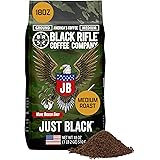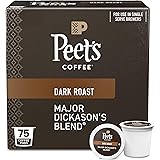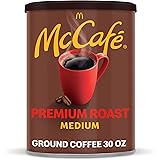Understanding Espresso Drinks: Your Definitive Guide to Black and Milk Coffee Creations
Recent industry reports indicate that globally, milk-based coffee beverages consistently outsell their black counterparts, often by a margin of two-to-one or more. Specifically, data from a popular coffee establishment, Večerka, reveals that 68% of all coffee orders this past year were milk coffees, significantly surpassing the 32% attributed to black coffee options. This trend underscores a broad consumer preference for creamy, balanced flavors in their daily cup. Yet, despite this popularity, a clear understanding of the diverse espresso drinks available often proves elusive for many coffee enthusiasts.
In the video above, our expert barista provides a foundational overview of the most popular espresso creations. This article serves as an expanded guide, delving deeper into the nuances of these beloved beverages. It is intended that, by the end of this exploration, a clearer distinction between a rich espresso and a velvety flat white will be understood, enhancing future coffee ordering experiences.
The Foundation: Exploring Black Espresso Creations
At the heart of nearly every coffee shop menu is the espresso machine, a marvel of engineering designed to extract intense flavors from finely ground coffee beans. This process, known as espresso extraction, involves forcing hot, pressurized water through a compacted ‘puck’ of coffee, yielding a concentrated shot. The resulting liquid, often characterized by its distinctive crema—a reddish-brown foam layer—is the backbone of many celebrated espresso drinks.
However, the journey of black coffee drinks extends beyond this potent shot, incorporating various methods of dilution or preparation. Each modification is carefully designed to alter the intensity and volume, catering to a diverse spectrum of preferences. A true appreciation for these nuanced differences is cultivated through understanding their unique compositions and origins.
Single Espresso: The Concentrated Core
The single espresso, often referred to simply as “an espresso,” is served in a diminutive cup, typically holding a volume between 20 to 30 ml. At Večerka, for instance, a precise 21 grams of coffee is utilized to produce this intense beverage. It is known for its rich taste and a notably smooth, almost syrupy structure. Before consumption, it is often recommended that the layers be stirred, ensuring a harmonious blend of flavors and textures that might otherwise separate.
Historically, the espresso was perfected in Italy in the early 20th century, designed for quick consumption, reflecting the fast-paced Italian lifestyle. Its powerful flavor profile is a testament to the concentrated extraction, making it a favorite among purists who desire the unadulterated essence of the coffee bean.
Double Espresso (Doppio): Twice the Intensity, Same Great Taste
For those desiring a more substantial coffee experience without diluting the intensity, the double espresso, or espresso doppio, is the preferred choice. It employs the same meticulous recipe as its single counterpart but utilizes two espresso shots, captured in a larger cup, typically one used for a cappuccino. This approach ensures a consistent flavor profile, simply offering a greater volume of the concentrated brew.
Economically, ordering a doppio often proves more cost-effective than purchasing two individual single espressos. This option is particularly popular in specialty coffee shops where the nuanced flavors of the double shot can be fully appreciated. In fact, it is observed that some establishments serve only double espressos as their standard, reflecting a preference for a robust flavor foundation.
Americano: Espresso with a Milder Character
The Americano is essentially an espresso that has been thoughtfully diluted with hot water, presenting a less intense coffee experience for those who prefer it. It is commonly served in a cappuccino-sized cup, with the barista first pouring approximately 100 to 120 ml of hot water before adding the espresso shot. This method preserves the inherent flavor characteristics of the espresso while considerably softening its intensity.
The drink’s origin is frequently attributed to American soldiers during World War II who found European espresso too strong and sought to dilute it to more closely resemble the filter coffee they were accustomed to back home. Today, it remains a popular choice for those seeking the depth of espresso flavor in a larger, more approachable format, suitable for leisurely sipping.
Lungo: A Longer Extraction with Nuanced Flavors
The Lungo, which translates to “long” in Italian, represents a longer espresso extraction. This is typically achieved by adjusting the grinder to a coarser setting and extending the shot time, resulting in a volume usually between 30 to 40 grams. This extended extraction, however, can introduce different flavor compounds, sometimes leading to a slightly bitter profile compared to a standard espresso.
Alternatively, as demonstrated at Večerka, a Lungo can be prepared by serving a regular espresso alongside a separate vessel of hot water, allowing the customer to dilute it to their exact preference. This method offers greater control over the final taste profile, making it a versatile option for various palates.
Filter Coffee (Batch Brew): The Black Coffee Alternative
While not an espresso-based drink, filter coffee, often presented as a batch brew, is a significant black coffee alternative found in many coffee shops. This brewing method relies on gravity to pass hot water through a bed of ground coffee, often producing a larger volume of coffee. Its inclusion in this discussion is warranted due to its prevalence as a black coffee option.
The flavor profile of filter coffee is generally described as more refined and less intense than espresso, with a cleaner finish. It is often noted that its flavors continue to develop and become more complex as the coffee cools, offering a unique sensory experience distinct from the immediate intensity of espresso. Techniques like pour-over also fall under this category, offering highly controlled extractions for superior clarity.
Mastering Milk-Based Espresso Drinks: Art, Science, and Ratios
The world of milk coffee, accounting for a significant majority of coffee orders, introduces an artful blend of espresso with steamed milk. This combination transforms the concentrated coffee shot into a softer, creamier beverage, where the balance between coffee intensity and milk sweetness is paramount. The skill of the barista, particularly in their steaming technique and pour, greatly influences the final texture and taste of these popular drinks.
The type of milk, its temperature, and the creation of microfoam are critical elements. Microfoam, a velvety, finely textured milk, is achieved by introducing air into cold milk with a steam wand, then heating it to the optimal temperature, typically between 55-65°C (130-150°F). This process denatures milk proteins and breaks down fats, resulting in a sweet, creamy texture that perfectly complements the robust flavors of espresso. The intricate dance between espresso and milk creates distinct profiles for each drink, making ratio understanding essential.
Espresso Macchiato: A Hint of Milk
For those who favor the strong taste of espresso but desire a mere whisper of milk, the Espresso Macchiato is an ideal choice. It is prepared by adding just a small dollop of foamed milk to a single shot of espresso, typically in an espresso cup. The coffee to milk ratio for this drink usually ranges between 1:1 and 1:2, ensuring that the espresso’s character remains dominant while the milk introduces a subtle creaminess and a touch of sweetness.
The term “macchiato” itself means “stained” or “marked” in Italian, signifying an espresso “marked” with milk. It is a quick, flavorful indulgence, offering a brief respite with its balanced intensity.
Cortado (Piccolo): A Balanced Miniature
The Cortado, sometimes referred to as a Piccolo, is a compact yet perfectly balanced milk espresso drink. It is often served in a glass cup, typically ranging from 100 to 120 ml in volume. This drink combines a single shot of espresso with an equal or slightly greater amount of foamed milk, resulting in a coffee to milk ratio of approximately 1:4. This specific ratio is carefully calibrated to “cut” (from the Spanish “cortar”) the acidity of the espresso, producing a smoother, less intense flavor profile than a macchiato, but with more coffee presence than a cappuccino.
The Cortado’s popularity has surged, particularly in regions where a strong yet mellow coffee is appreciated. Its smaller size and robust flavor make it an excellent choice for a quick but satisfying coffee break, offering a delightful harmony between coffee and milk.
Flat White: A Velvety Double Kick
Originating from Australia and New Zealand, the Flat White has garnered immense popularity worldwide. This distinct espresso drink is characterized by its use of a double shot of espresso combined with foamed milk, usually served in a cappuccino-sized cup or sometimes even smaller for a more concentrated experience. The coffee to milk ratio is similar to that of a Cortado, around 1:4, but the double espresso shot provides a significantly bigger caffeine kick and a more pronounced coffee flavor that cuts through the milk.
The hallmark of a well-made Flat White is its “flat” layer of microfoam, which is thinner and silkier than the foam on a cappuccino. This delicate texture allows the robust espresso flavors to truly shine, making it a favorite among those who seek a strong coffee taste complemented by the luxurious mouthfeel of expertly steamed milk.
Cappuccino: The Global Favorite
Arguably the most popular coffee drink globally, the Cappuccino is a harmonious blend of a single shot of espresso and meticulously foamed milk. The ideal cup size for a cappuccino typically falls between 150 to 200 ml, allowing for a balanced interplay between coffee and milk. A common coffee to milk ratio is about 1:6 or 1:7, which delivers a rich coffee flavor beautifully softened by the creamy milk.
The distinctive three-layer composition—espresso at the bottom, followed by steamed milk, and crowned with a generous cap of foamed milk—is what defines this classic. Latte art, often adorning the surface of a cappuccino, is not merely decorative; it serves as a testament to the barista’s precision in steaming milk and their overall skill, often brightening a customer’s day with its intricate designs. The global affection for the cappuccino is clearly evident in its sales figures; at Večerka, it accounted for over 37% of all milk coffee orders, exceeding the combined total of all black coffee sales.
Caffè Latte: The Milky Embrace
For individuals who prefer a coffee experience dominated by milk’s creamy embrace, the Caffè Latte stands out as the ultimate option. Served in a relatively large cup, typically around 300 ml, it combines a single shot of espresso with a generous volume of foamed milk. The coffee to milk ratio for a Caffè Latte is substantially higher, often reaching 1:14, signifying a much milder coffee flavor softened by the abundant milk content.
The Italian term “latte” simply means “milk,” aptly describing this drink. Its smooth, milky texture and subdued coffee flavor make it an approachable choice, especially for those new to espresso or who prefer a less intense beverage. The Caffè Latte’s consistent popularity, with 11% of milk coffee orders at Večerka, underscores its role as a comforting and widely enjoyed coffee shop staple. While it contains less coffee intensity than many other espresso drinks, its sheer volume and creamy texture make it a satisfying choice for many.







